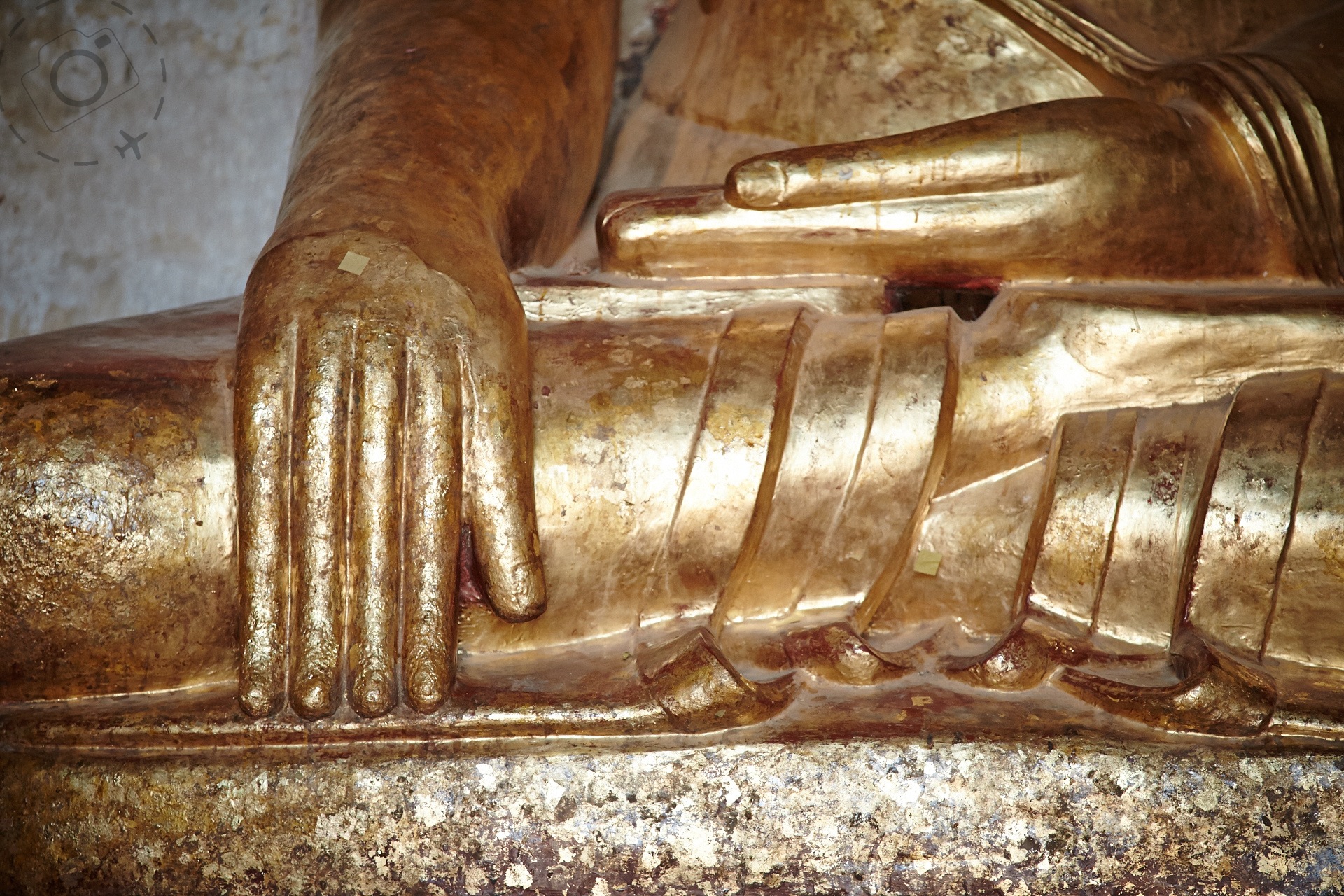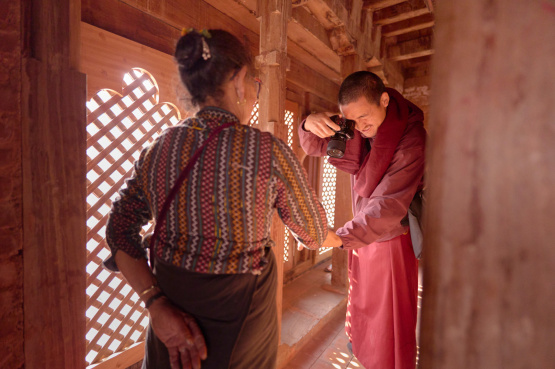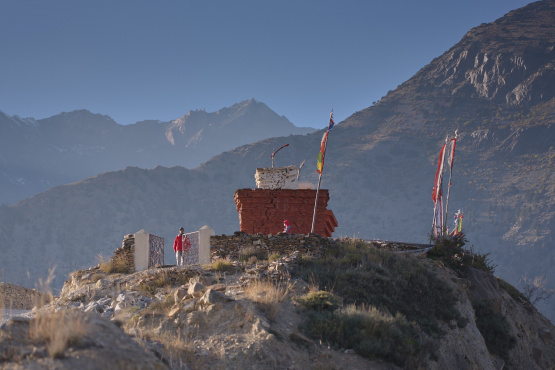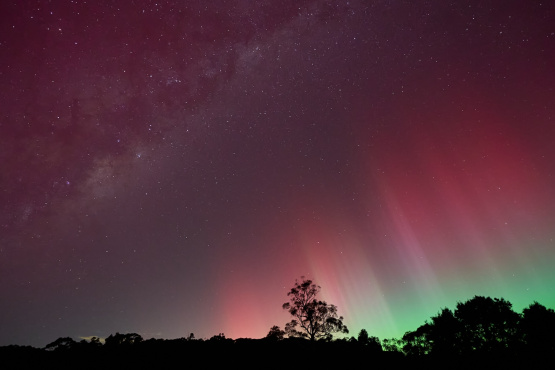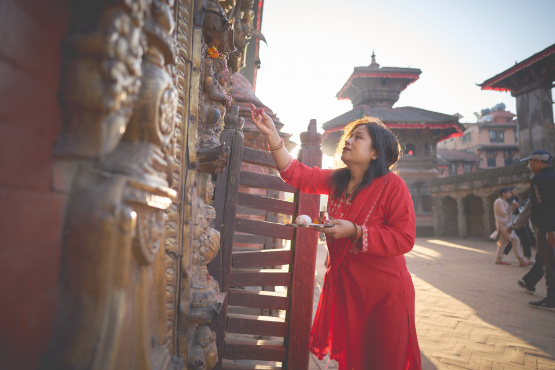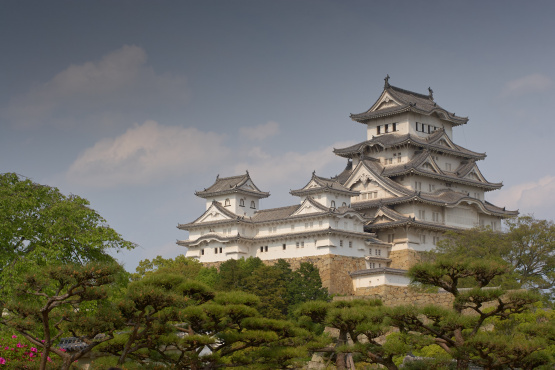After four days in Myanmar I had learned almost nothing of the country or its people. My tour guide was Government approved, a well to-do girl of significant privilege and very little imagination. She was not unaware of the political drama that has unfolded in Myanmar during recent decades, but was clearly unaffected by it. So one afternoon I escaped the organised tour to search for the real Yangon, and I found him sitting beside a stupa.
Uttama is a monk and he's trying to improve his English. Learning another language in Myanmar costs about $40 a term, which is enough money to eat for a week. Monks have to work part-time to pay for their English lessons so meeting travellers is cheap practice. It can be hard to find locals in Yangon who speak our language but you can nearly always find a monk to talk to at Shwe Dagon Pagoda.
Monks like Uttama travel to Shwe Dagon from across Yangon and all over Myanmar. All day long they walk around the main stupa in circles, chanting prayers to themselves or recounting parables to each other. Prayer halls and libraries surround the temple and are almost constantly in use. This an active place of worship and study.
Yangon's shining pinnacle is the Shwe Dagon Pagoda, resting on the highest hill above the city. Hundreds of golden stupas, brilliant white shrines, detailed statues of Buddha and deep maroon pagodas cover the hill-top in a bold display of colour. Shwe Dagon is a peaceful sanctuary from the cars and concrete of the metropolis below, isolated from the rest of the world by sight or sound.
On a cloudless afternoon the sunset turns orange and the magnificent golden stupa of Shwe Dagon changes from yellow to gold to pink. Parasols on the tips of spires muffle the last rays of sunlight and even the monks sit and pause to take a few photos. Spirituality can look as beautiful as it feels.
As I watched the sunset so did Uttama, a middle-aged monk enjoying a day away from his parables and waiting to meet a friend. Without the assistance of mobile phones and irregular access to email the people of Yangon use the temples for social engagements. Uttama and his friend arranged to meet at the temple a few weeks before.
"We said to meet at Wednesday on Wednesday", says Uttama. Every day of the week has its own marble statue of the Buddha located around the stupa, and Buddhists offer prayers for their name-day according to which day of the week they were born.
Once the sun has gone the weight of tourists quickly thins out. We watched residents blessing their name-day Buddha with fervency, tipping cups of water over the statue and tying garlands of flowers around the neck. They meditate while they wash the Buddha, contemplating thoughts of kindness for their friends and family with each gush of water.
My monk walked me around some of the shrines away from the central stupa, where poses of the Buddha are as varied as Myanmar's ethnic groups. Palms facing up, out or away inform the well trained monk as to the stage of enlightenment represented by the figure. Symbols are hidden within every element of the temples, from the stepped roof top of pagodas, the lotus leaves embossed into stupas and parasols that adorn each spire.
Everything we see points to the different stages of enlightenment and lessons learned along the way.
Each element is a work of art that demands unique skills. Monks study for years to perfect these craft and make their expression a task of meditation once again. These skills demand a peaceful mind, and help create one. Uttama jokes to me, "Who ever heard of an angry monk painting the image of Buddha?"
There are surprisingly few tourists at this site but I know that will change in the years to come. For decades the opposition party in Myanmar has asked people not to visit the country, as most hotels and tour packages put money directly into the pockets of Junta Generals. Recently the blanket boycott has changed in the hope of increasing international awareness of life inside Myanmar.
They now ask that travellers skip the big tour groups and travel as do the locals, using guest houses instead of hotels and public buses instead of coaches.
Uttama agreed, "If you travel as two or three people and spend your money on local restaurants then you can do good things here. Tour groups never eat outside the hotels and step directly from the temple to the bus, they help nobody except the government."
My own experience had echoed his concerns. The moment I stepped off the plane from Saigon it was clear that the isolation strategy simply isn't working. I had left a clean modern airport in Vietnam and arrived at a clean modern airport in Myanmar, both equally well equipped with western signage and technological smarts and both equally popular with western travellers.
Many of my friends had backpacked through the country in recent years and pointed out how the small amount of currency they bring can make a big difference to locals when spent outside of government owned business. Residents require a license to handle foreign currency in Myanmar, so you cannot entirely escape the Junta when spending your dollars. The fact is the Junta is doing just fine whether you visit or not, but the locals stand to benefit significantly from travellers who get off the packaged path.
Once you've exchanged your dollars for local Kyat it's clear you wont need much of it. My monk took me to a strip of local restaurants for dinner which cost us the equivalent of 15 cents for the bus ride, $1.50 for fried rice and 75 cents for a cup of tea. It cost me more to pay the entrance ticket at Shwe Dagon Pagoda in fact, and most of that money will go to the government instead of the temple.
Maintaining temples and the traditional teachings is a burden that falls to the generosity of local residents. Monks like Uttama are important to the people of Myanmar, for they represent the wisdom of their country and the voice of a nation. These devoted souls spend their day beneath the spiritual umbrella of temples as well as the open streets of the city, bridging the traditional culture from the last few thousands years and the modern reality of life in Myanmar.
Buddhism is embraced by everyone in the country, and it embraces everyone in turn. Now the people of Myanmar are asking travellers to embrace their country too.

Keep Reading
Join Ewen's newsletter for monthly updates on new photography articles and tour offers...Subscribe Here

